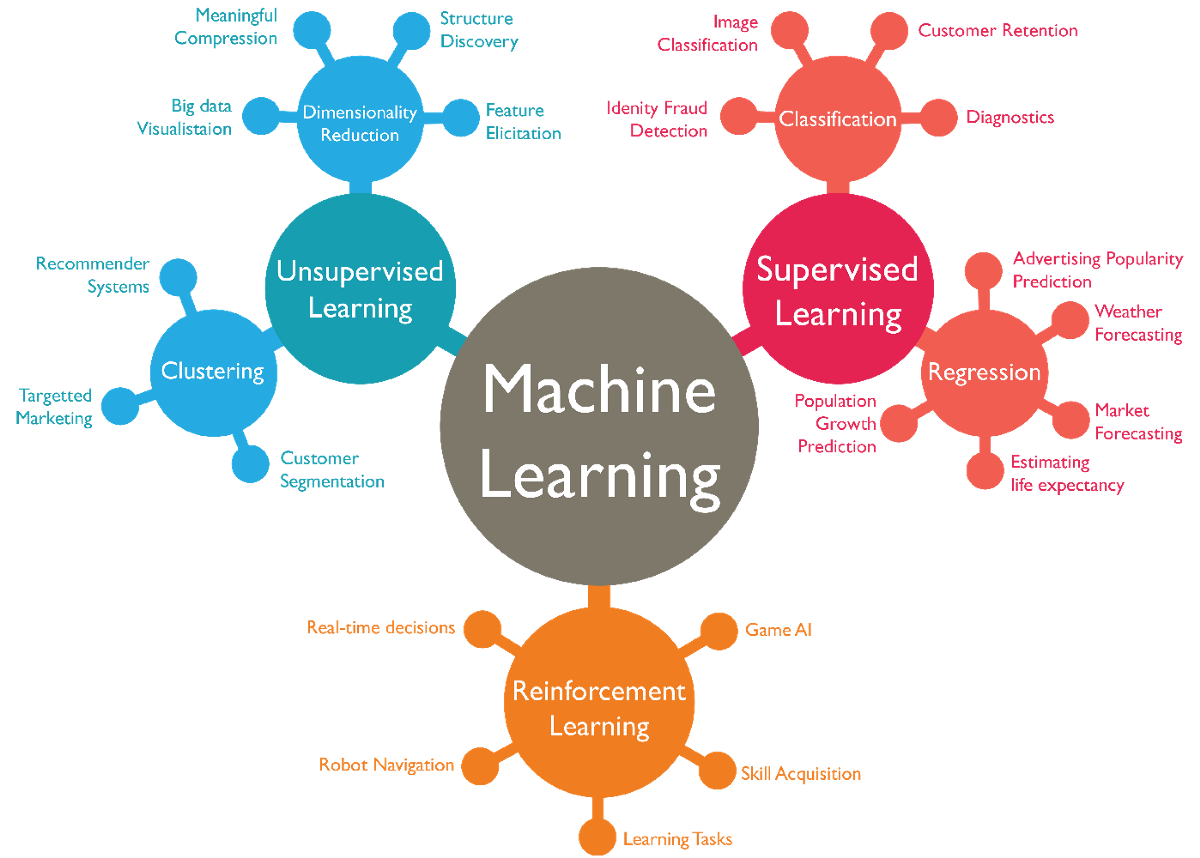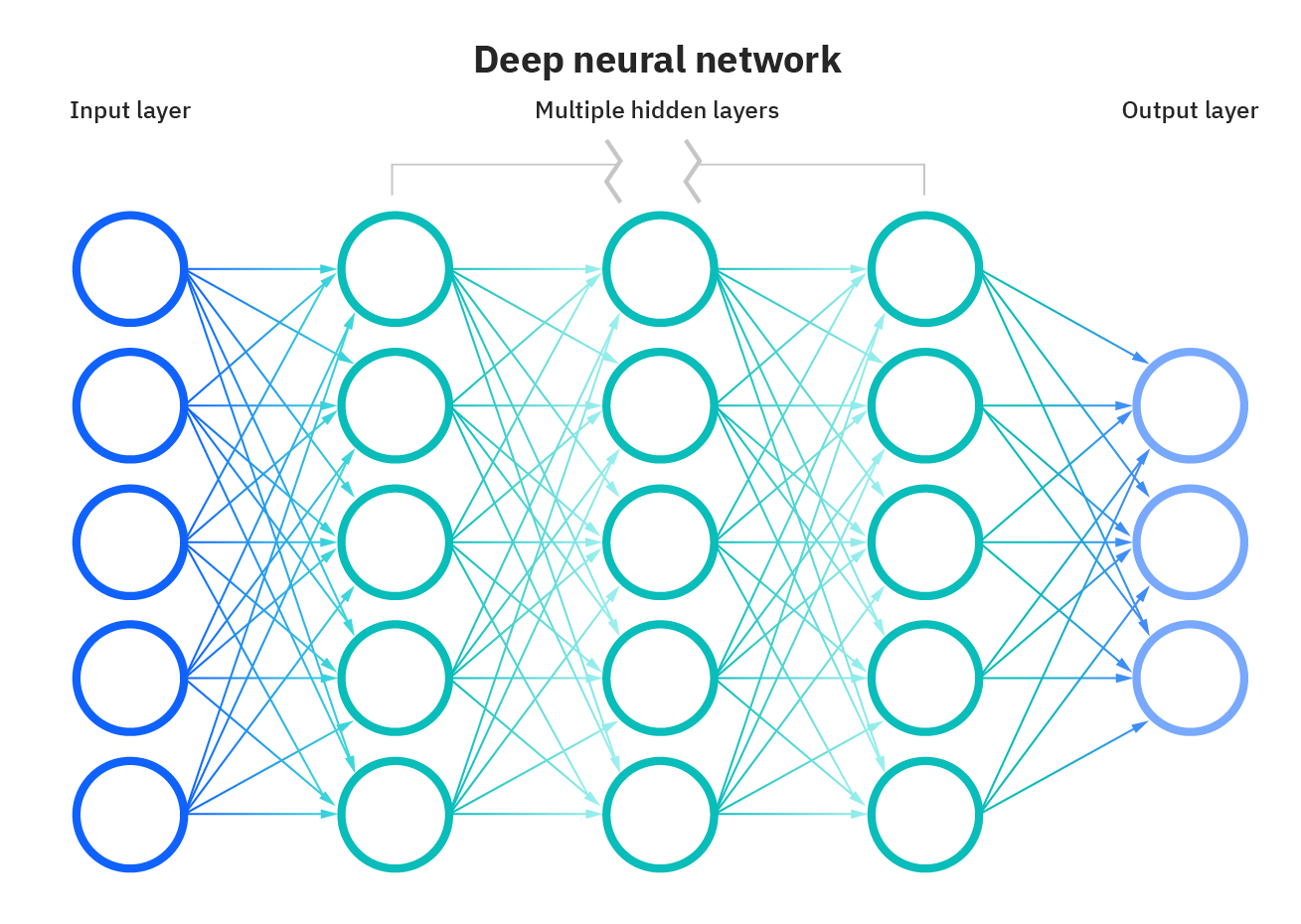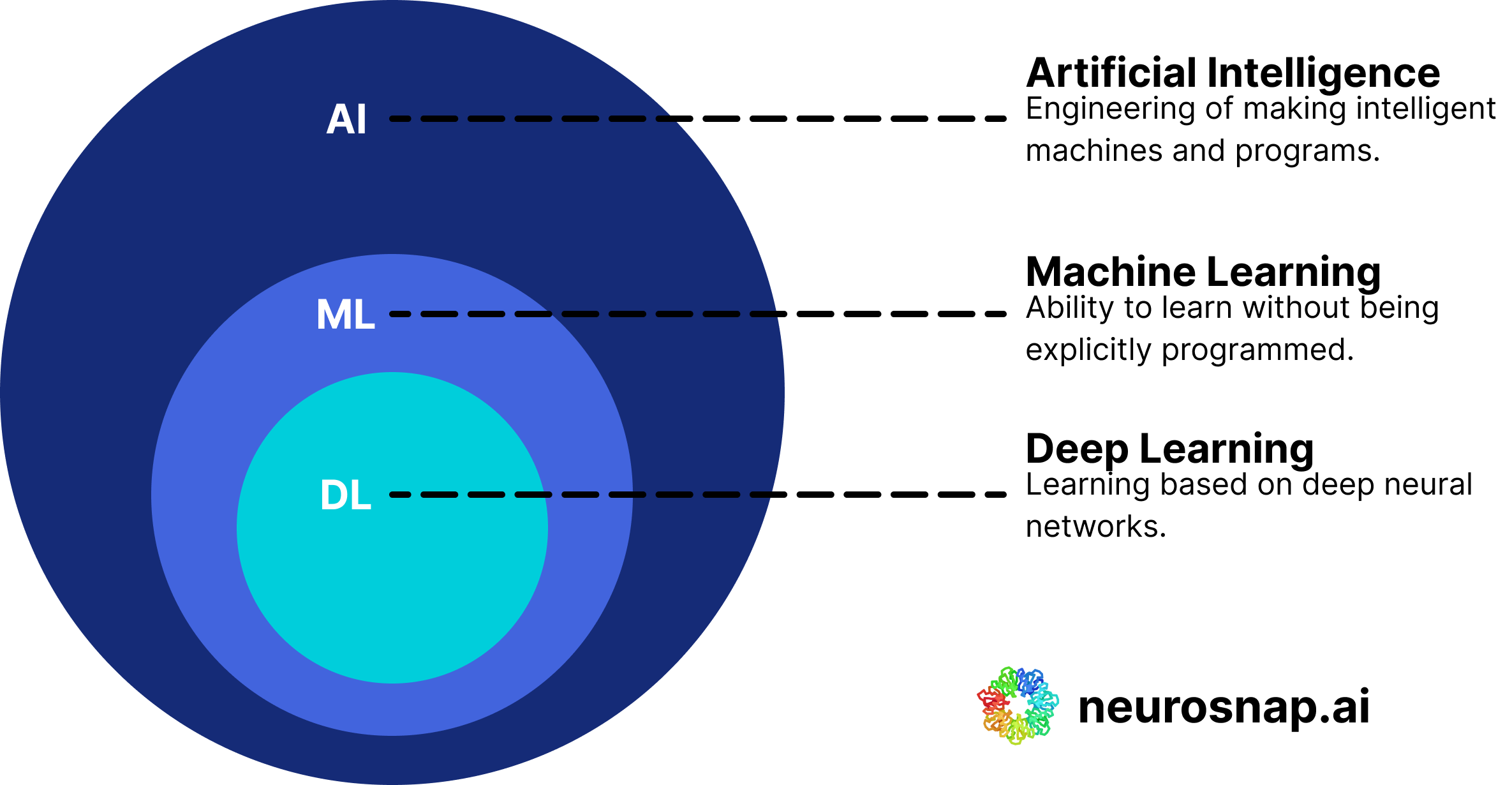Understanding the Differences between AI, Machine Learning, and Deep Learning
Written by Keaun Amani | Published 2023-4-1
Written by Keaun Amani | Published 2023-4-1
In recent years, we have seen the rise of technologies that promise to change the way we live, work, and interact with the world. Among them, three terms stand out: Artificial Intelligence (AI), Machine Learning (ML), and Deep Learning (DL). While they are often used interchangeably, they are not the same thing. In this blog post, we will explore what AI, ML, and DL are and what sets them apart.
AI is the field of study that aims to create machines that can perform tasks that typically require human intelligence, such as recognizing speech, making decisions, or understanding natural language. AI is a broad term that encompasses many subfields, including ML, and DL.
ML is a subset of AI that focuses on developing algorithms that can learn from data and make predictions or decisions based on that learning. In other words, ML is a way to teach machines to learn from experience, much like how humans learn. ML algorithms can be categorized into three types: supervised learning, unsupervised learning, and reinforcement learning.
Supervised learning involves training a machine learning model on labeled data, where each example in the data is associated with a target output. The model then learns to predict the output for new examples it has not seen before. Unsupervised learning involves training a model on unlabeled data, where the algorithm finds patterns and structures in the data without any explicit target output. Reinforcement learning is a type of learning where an agent learns to make decisions based on feedback from its environment, such as rewards or punishments.

DL is a subset of ML that focuses on developing artificial neural networks that can learn from large amounts of data. DL models are inspired by the structure and function of the human brain, with multiple layers of interconnected nodes that process information. DL models can learn to recognize patterns in data, such as images or speech, and can be used for tasks such as image and speech recognition, natural language processing, and robotics.
The key difference between ML and DL is that DL models can automatically learn hierarchical representations of data, while ML models require manual feature engineering. This means that DL models can learn to identify complex patterns and relationships in data without the need for human intervention, making them more powerful and scalable than traditional ML models.

In summary, AI is the broader field that encompasses both ML and DL. ML is a subset of AI that focuses on developing algorithms that can learn from data, while DL is a subset of ML that focuses on developing neural networks that can learn hierarchical representations of data. By understanding the differences between these three terms, we can better appreciate the potential of these technologies and their impact on our lives.

By Keaun Amani
By Keaun Amani
By Danial Gharaie Amirabadi
By Keaun Amani
By Danial Gharaie Amirabadi
By Keaun Amani
Register for free — upgrade anytime.
Interested in getting a license? Contact Sales.
Sign up free